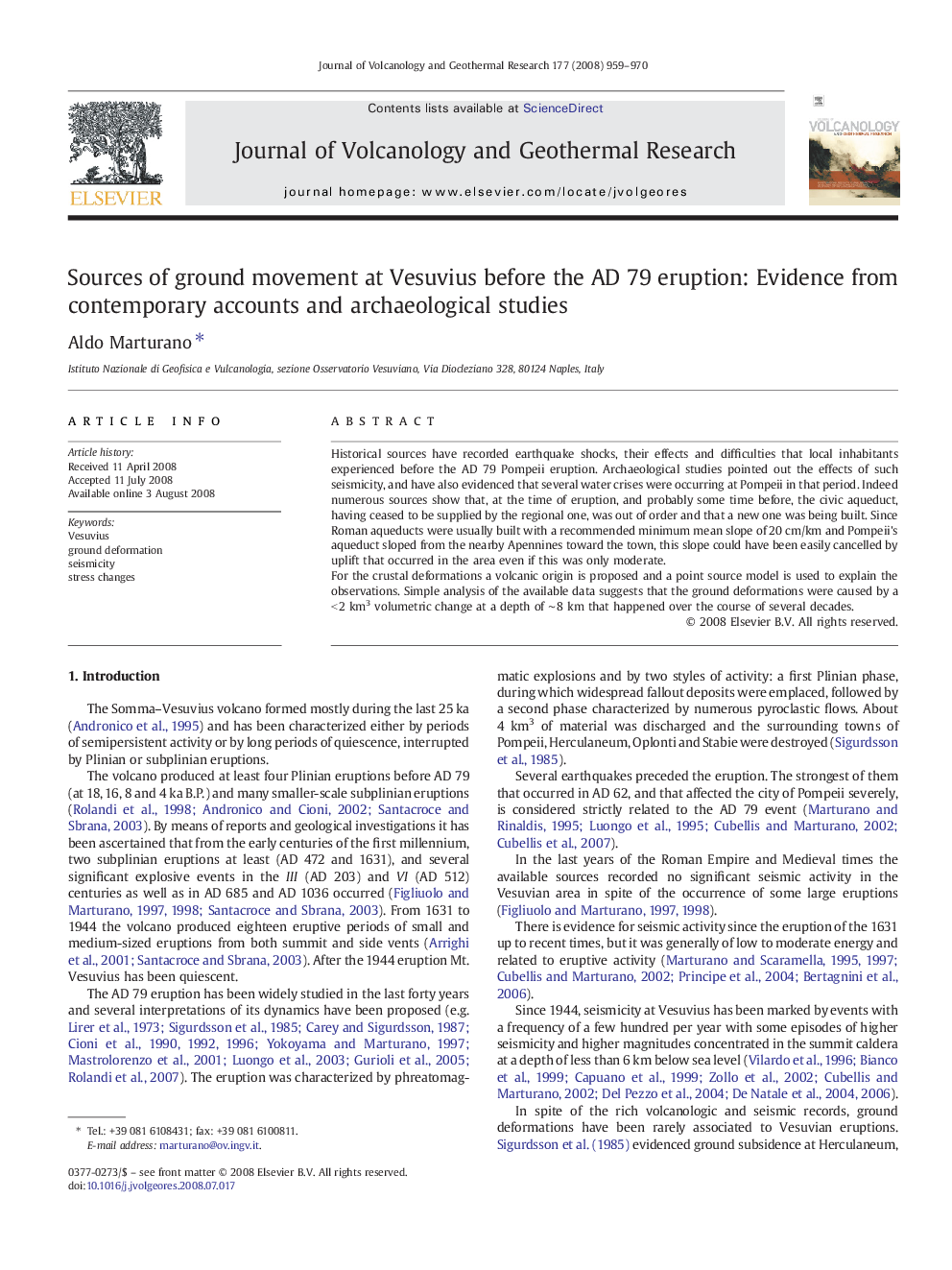| Article ID | Journal | Published Year | Pages | File Type |
|---|---|---|---|---|
| 4714579 | Journal of Volcanology and Geothermal Research | 2008 | 12 Pages |
Historical sources have recorded earthquake shocks, their effects and difficulties that local inhabitants experienced before the AD 79 Pompeii eruption. Archaeological studies pointed out the effects of such seismicity, and have also evidenced that several water crises were occurring at Pompeii in that period. Indeed numerous sources show that, at the time of eruption, and probably some time before, the civic aqueduct, having ceased to be supplied by the regional one, was out of order and that a new one was being built. Since Roman aqueducts were usually built with a recommended minimum mean slope of 20 cm/km and Pompeii's aqueduct sloped from the nearby Apennines toward the town, this slope could have been easily cancelled by uplift that occurred in the area even if this was only moderate.For the crustal deformations a volcanic origin is proposed and a point source model is used to explain the observations. Simple analysis of the available data suggests that the ground deformations were caused by a < 2 km3 volumetric change at a depth of ∼ 8 km that happened over the course of several decades.
